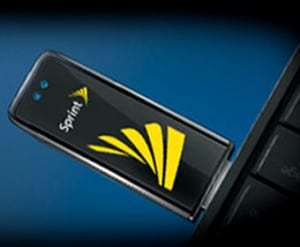Sprint adds 20 new LTE markets
US mobile network Sprint has extended its LTE coverage to 20 new markets, taking the total number of cities in which the service is available to 402, the firm said. It also introduced its Spark service, which takes advantage of LTE-Advanced techniques including carrier aggregation, in two new markets. Sprint said that it expects to have LTE coverage of more than 250 million people by the mid point of 2014.
March 18, 2014

 US mobile network Sprint has extended its LTE coverage to 20 new markets, taking the total number of cities in which the service is available to 402, the firm said. It also introduced its Spark service, which takes advantage of LTE-Advanced techniques including carrier aggregation, in two new markets, Provo, Uta and trenton, N.J.. Sprint said that it expects to have LTE coverage of more than 250 million people by the mid point of 2014.
US mobile network Sprint has extended its LTE coverage to 20 new markets, taking the total number of cities in which the service is available to 402, the firm said. It also introduced its Spark service, which takes advantage of LTE-Advanced techniques including carrier aggregation, in two new markets, Provo, Uta and trenton, N.J.. Sprint said that it expects to have LTE coverage of more than 250 million people by the mid point of 2014.
“Sprint’s all-new network is providing our customers significantly better call quality and faster data speeds in more places,” said John Saw, chief network officer at Sprint. “Customers in Provo and Trenton will be particularly pleased with the power of Sprint Spark – say goodbye to slow downloads and content that lags.”
Speaking to Telecoms.com in November last year, Saw expanded on the competitive benefits of Sprint’s Spark programme. “We have the ability to build a bigger pipe than the competition because of our spectrum position, especially in the top 100 markets,” he said. “We have a lot of contiguous spectrum at 2.5GHz, and this allows for carrier aggregation to build the big pipes we need to ultimately offer better performance, faster speeds, and unlimited data. We actually want customers to use our LTE network because we will have the capacity to support the demand for high speed data.”
The 7th annual LTE North America conference is taking place on the November 18th-20th 2014 at the InterContinental Hotel, Dallas, Texas, USA. Click here NOW to download a brochure for the event.
He continued: “Spark combines a number of advanced capabilities such as 1x, 2x and 3x carrier aggregation for speed, 8 transmitters 8 receiver radios (8T8R) for coverage, multi-antenna processing techniques like MIMO for capacity, and Time Division Duplex (TDD) formats for spectral efficiency, along with tri-band devices. These capabilities can offer peak speeds of 50-60 megabits per second. We recently demonstrated 1Gbps at our lab in Silicon Valley, and with our spectrum and technology assets we believe it is technically feasible to deliver more than 2Gbps per sector of over-the-air speed.”
The 20 new markets announced Monday are:
Bakersfield, Calif.,
Bridgeport/Stamford/Norwalk, Conn.,
El Centro, Calif.,
Hot Springs, Ark.,
Kenosha, Wis.,
Lancaster, Pa.,
Mason City, Iowa,
Myrtle Beach, S.C.,
Nogales, Ariz.,
Omaha, Neb.,
Ocean City, N.J.,
Peoria, Ill.,
Provo/Orem, Utah,
Sarasota/Bradenton, Fla.,
Shawnee, Okla.,
Scranton/Wilkes-Barre, Pa.,
Trenton/Ewing, N.J.,
Visalia/Porterville, Calif.,
Willimantic, Conn. and
Zanesville, Ohio
About the Author
You May Also Like


.png?width=300&auto=webp&quality=80&disable=upscale)







.png?width=300&auto=webp&quality=80&disable=upscale)


_1.jpg?width=300&auto=webp&quality=80&disable=upscale)